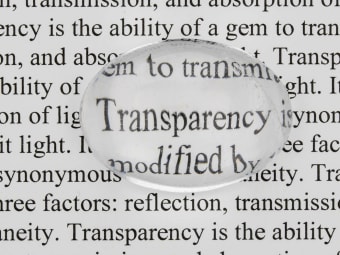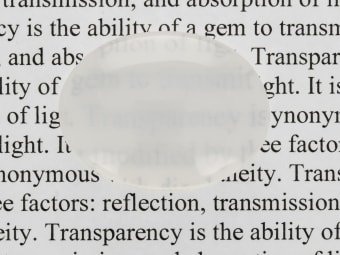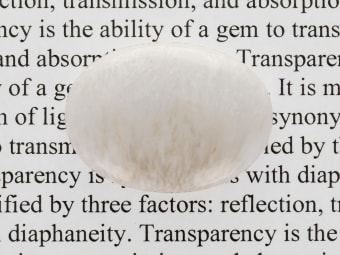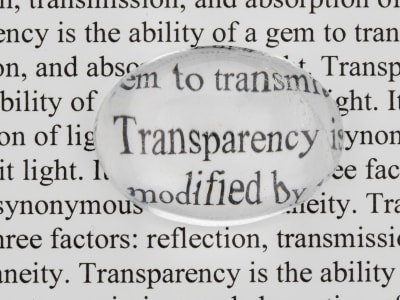Gemstone transparency, also known as diaphaneity, simply means the ability or level of a mineral or gemstone to transmit light. Transparency, or lack there of, is dependent upon how much light gets through the gem. When light hits the gem's surface, varying amounts of light will be reflected, absorbed or transmitted. Transparency is not only affected by the gem's chemical composition and crystal structure, but also by the gem's body color, depth, presence/absence of inclusions and surface condition.
When you are cataloguing the properties of your gemstone by
observation alone, it is important to first understand the definition
of diaphaneity and whether your gem is transparent, translucent or opaque.
What Factors affect Gemstone Transparency?
The following four factors affect the transparency of a gemstone:
- The structure of the stone
- Color: Deeply colored stones will pass less light than lightly colored ones
- Thickness: Thicker stones will allow lesser transmission than thinner stones
- The presence or absence of imperfections and inclusions
What are Transparent Gemstones?
A transparent gemstone or mineral not only transmits light, but objects or images may be seen clearly through the material. An object viewed through a transparent stone appears with sharp, clear and distinct outlines.

What are some examples of transparent gemstones and minerals?
Typical examples of transparent or clear gems are:
What are Translucent Gemstones?
A translucent gem or mineral can transmit light, but objects will not be visible through it.

What are some examples of translucent gemstones and minerals?
What are Opaque Gemstones?

What are some examples of opaque gemstones and minerals?
Typical examples of opaque gems are:
Optical properties, such as transparency, provide a non-damaging means for identifying a gemstone and are also responsible for all the features someone immediately notices and appreciates. As you collect and identify gems in your collection, make sure to take the time and effort to look at your gemstones closely for these factors that tell you more about the gemstone's story and unique characteristics.

